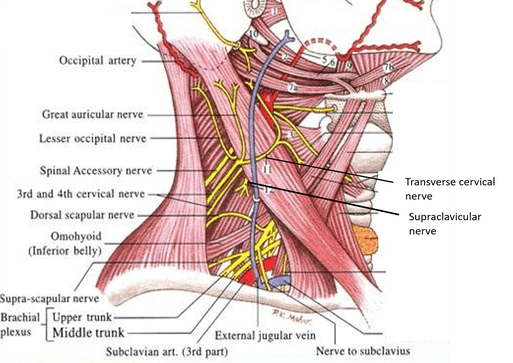
The superior border of the scapula extends from the superior angle to the coracoid process. The spinoglenoid notch connects the two fossae, which is situated under the acromion and is where the suprascapular nerve and artery run on the way to supplying the infraspinatus muscle. The acromion is an oblong continuation of the spine that runs laterally then anteriorly above the supraspinous fossa and is the summit of the shoulder on palpation.

This ridge separates the teres major and minor muscles from the infraspinatus muscle. A ridge runs down the infraspinous fossa near the lateral border from the glenoid cavity to just above the inferior angle. Above the spine is the supraspinous fossa and below it is the infraspinous fossa. The dorsal surface divides into two unequal parts via the scapular spine which runs across from the posterior scapula before forming the acromion. Three ridges within this fossa allow for tendinous attachment. The ventral surface of the scapula abuts the thoracic rib cage and has a large concavity called the subscapular fossa where the subscapularis attaches.

Muscle attachments to these landmarks are covered in the "Muscles" section. The scapula is a site of attachment for many muscles and has several processes, projections, and surfaces for attachment. The scapula has three angles (superior/medial, lateral, inferior), three borders (medial, lateral/axillary, and superior), and two surfaces (ventral and dorsal). The scapula has three processes: the acromion, the spine, and the coracoid process.


 0 kommentar(er)
0 kommentar(er)
